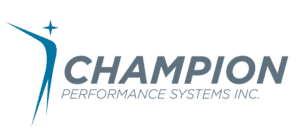Originally coined by author and entrepreneur Verne Harnish in 2014, the One Page Strategic Plan (OPSP) gets businesses on the same page, both literally and figuratively.
The OPSP is a concise yet powerful tool that brings your company’s vision and big and small goals alike onto a singular page. Doing so requires company introspection and collaboration across the entire team but is incredibly beneficial for scaling up your business. You don’t want to be bogged down by goals, values, and vision(s) that are too complex and ever-changing.
The OPSP is divided into several columns, all of which work to help your company achieve results and realign its mission. For every big or small business decision, the team can refer to the OPSP, making it a guiding compass, pointing to your company’s True North. This guide will cover many aspects of this valuable business tool so you can get started today.
Why Do You Need the One Page Strategic Plan?
Besides aiding companies in making complex business decisions, the OPSP brings the following other advantages:
- Simplifies workflow: Having your values, goals, and success indicators written out on a singular page helps keep these highly important aspects of your business as simple and easy to refer to as possible. There’s no need to sift through piles of paperwork or have postcards splayed out among the workspace to find them.
- Narrows down your numerical goals: As part of the OPSP, you write out your numerical goals and targets, both in terms of time and revenue. It helps you determine the most important leading and lagging indicators with powerful KPI’s. This disposes of the vagueness that many businesses fall into with their goals, further delaying their achievement.
- Assists in giving you a timeframe: The OPSP helps you set up goals for both the near and distant future. While setting out short-term goals establishes team confidence and capability, forming long-term goals increases motivation and inspiration.
- Helps you align and inspire your troops: Once the OPSP has been designed, shared, reviewed, refined and launched, it puts you and your leadership team into position to motivate and inspire. Imagine what it will be like to have everyone from top to bottom to understand what they do and how it’s measured to best grow the business.
- Helps you align with other companies: If you are planning a joint venture of some sort down the line, your OPSP can tell you whether your company is in alignment with possible partner companies. On the other hand, constructing your OPSP shows other companies that you are investing in your company’s growth and long-term plans.
Now you know the “what” and “why” behind the OPSP. The next step is the “how.”
What Should You Include in Your OPSP?
The OPSP is typically divided into several different columns. Each of these columns serves its own purpose and sets your business up for widespread success.
Your Core Values
First things first, you will need to define the core values of your company. This step is not about latching onto a few corporate-friendly phrases that you can paste on the wall. In fact, the process is quite the opposite. Your values should include phrases you and your team are already familiar with and commonly use during meetings or brainstorming sessions.
Furthermore, they should reflect your beliefs and the identity of your company culture. What values back up the decisions and thought processes that make up your company as a whole? This first step often takes the deepest introspection, but once completed, it will make up the backbone of your OPSP.
And… if a tall bald guy (like Ken Larson at Champion PSI) were to follow you around, would they see that you are acting in alignment with these values?
Your Purpose
Your purpose will reflect the emotional and, quite often, personal drive behind your company. It is the overall benefit you provide and/or problem you solve by providing customers with your products or services. When it comes to defining purpose, you can first ask for insight from the company’s founder(s) or executives. Doing so enables you to get firsthand reasoning behind why the company began and what continues to drive it forward.
At the same time, it’s also a good idea to ask employees to get a well-rounded perspective of the company’s purpose. You can also see if everyone concurs about the company’s purpose or whether it needs to be reevaluated as a whole.
The most powerful purpose statements are usually three words or less. For example… Starbucks: Escape; 3M: Innovation; and ours… Ignite, Inspire and Impact!
Your BHAG (Big Hairy Audacious Goal)
Next up is settling on your Big Hairy Audacious Goal or BHAG. Authors Jim Collins and Jerry Porras came up with the phrase in their 1994 work, “Built to Last.” A BHAG is a 10-to-25-year goal that seems incredibly bold upon first glance but will act as your team’s key source of motivation and excitement along your company’s journey. Think of it as something so big that it may seem impossible at first, like going to the moon or climbing Mount Everest. Your BHAG should consist of one simple yet compelling sentence that will strike your team with motivation each time they see it.
Once this has been set, many businesses break this down to the next three years… known as a 3HAG. This provides additional and measurable focus when the time comes to build the strategy to get there.
And by the way leaders – don’t be surprised if your leadership team and employees come up with something far beyond your wildest imagination.
Your BHAG should reflect a goal so grand that it seems impossible until you achieve it.
Your Brand Promise
Your brand promises to separate you from your competition. They show your core customers why they should choose you every time. Much like a value proposition, your promises reflect the tangible benefits you provide your regular customers consistently. Customers should have no doubts about what they will receive from you. Furthermore, strong brand promises will draw in the exact customers you desire. In the end, quality will always beat quantity in customer acquisition as quality customers increase lifetime value. Powerful brand promises include KPI’s – also known as Kept Promise Indicators. These need to be measurable leading indicators… numbers we can influence and reflect a successful promise to your customers.
Your Key Thrusts
Key Thrusts are the top five areas the team feels need to be focused on and influenced over the next three to five years. The format is what we call AFR Statements… What Action needs to be applied to a specific Focus that will bring about the measurable Results we are striving toward? Overall, key thrusts should focus on the most important and influenceable area of the business that will help you reach your goals. To evaluate your level of success with these goals, you will use a set of key performance indicators as explored below.
Your Annual Initiatives
Once the Key Thrusts have been established, you then break these down into what needs to happen in the first year. These are your Annual Initiatives. These also should follow the AFR Model, and have targets and KPI’s attached for maximum effect.
Your Quarterly Big Rocks
Once your Annual Initiatives have been set.. And you guessed it, these each need to be broken down and focused on the first quarter. We call these Big Rocks (Covey). They are the most important thing you can do in the quarter that is the first logical step to help get on the path to achieve the Annual Initiative.
NOTE:
The Three Year Key Thrusts, Annual Initiatives and Quarterly Big Rocks are what we call the Heart of the Plan. When these are highly specific and focused… good things will happen as a by-product of the process.
Your Key Performance Indicators
Key performance indicators (KPI’s) are numerically focused aspects of your goals and strategic plans. They allow you to measure how your goals are coming along and can be split into several different categories depending on your targets. For instance, you can measure key indicators quantitatively, such as by the volume of sales, customer acquisition costs, or employee growth, to name a few common examples. However, you can also describe key indicators by qualitative measurements, like measuring employee and customer satisfaction or the development of a company’s leadership team. As a result, using a mixture of the two can give you a broader understanding of your success.
Most businesses over focus on results-based KPI’s. These are called lagging indicators… You have to wait for something to happen before you can measure them. The key is for every area of the business to have their own set of leading indicators… These are things you can influence (e.g. number of sales calls per week) and that directly impact your lagging indicators (e.g. sales per week)
Your Strengths, Weaknesses, and Trends
Last but certainly not least, it’s imperative to take a good, long look at your strengths, weaknesses, and overall industry trends. Identifying your strengths reinforces your purpose and values, while revealing your weaknesses helps you see what you can do better to stay on track. Moreover, keeping up with industry trends informs you of opportunities your business should be taking as well as areas that are not doing well in your field.
As an add-on, we use an advanced form of this we call the SWOT/TOWS Matrix exercise. When a leadership team performs this, what comes of it is what the business can 1. Capitalize on; 2. Monitor; 3. Improve; and 4. Eliminate. This is a powerful tool that helps generate even greater focus when it comes to planning strategically.
BONUS TOOL
What we find is the best way to eliminate the odds of failure is to create a 13 Week Race for each of your Quarterly Big Rocks. With clear Big Rocks and measurable outcomes, what observable actions need to happen in each week in order to achieve your goals? Who is accountable? And when reporting each week, is each champion green, yellow, or red? Discuss, adjust, get back to work.
Other Factors to Consider
Besides these seven essential columns, there are a few other factors to consider while crafting your OPSP:
- OPSP follow-ups: The number one way to measure your success is to have continual follow-up meetings with your team. Look at your OPSP weekly and ask: are we doing exactly what we need to be doing to attain our goals? If not, what do we need to do to change that?
- Accountability: Another big part of measuring success is accountability for your team. Everyone, from the head of the organization to employees, should have their own key objectives set out that they will work towards to bring the whole vision together.
- Daily consistent actions: If it helps you to monitor both your progress and accountabilities, you can construct a list of “daily consistent actions” to achieve every day. These actions should also reflect the values you have set out for your business.
- Themes: Lastly, creating your OPSP doesn’t have to be all serious business — consider developing a theme for each quarter’s achievements. When your team meets a milestone, have a celebration or reward that relates to your theme. It’s one of the best ways to foster team spirit.
After laying out the OPSP structure, the next step is to get started.
Getting Started With Your OPSP
The One Page Strategic Plan takes everything about your business that makes it great, including its values, purpose, and promise, and displays it on a single page for your entire team to see. This is an effective and powerful way to remind your team of its overall mission and help you narrow down your priorities and targeted goals.
So, whether you are scaling up your business or would just like a company refresher, the OPSP is ideal for you.
To start your OPSP, you first need to find the right template that works for you. Champion PSI’s OPSP template assists you in breaking down every essential step of the process. NOTE: This format is not what you find when you search online. We have jacked up the template – it’s now officially on steroids! If you’d like additional training, you can also schedule a free 30-minute phone call to get you started on the journey without the challenges and complications of the DIY approach.










